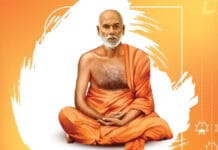Kamala Das, a prominent Indian poet, is known for her candid and emotive writing style that often explores themes of love, identity, and the female experience. An Introduction is one of her most celebrated poems, and it serves as a powerful introduction to her body of work. It is an autobiographical poem by Das in her first published work, Summer in Calcutta. In it, Das explores her own identity and sexuality, expressing a strong, distinctive voice against the traditional norms of the patriarchy. The poem is written in a confessional style, with the poet using her personal experiences to shed light on the broader social issues that women face. She embraces her bi-lingual identity, using English not as a colonial language but as her own, shaped by her experiences. The poem is both a personal statement and a social commentary, and it has been praised for its honesty, courage, and feminist perspective.
An Introduction is tangled from the very beginning in both history and memory. Kamala Das begins this poem by telling us that although she does not know much about politics, she is well aware of the politicians of her country, from Nehru to one of her times. She says the politics of India has always remained in the hands of males. She has memorized the names of all the politicians, like the days of the week or the name of the month. This sarcasm is underlined with a more serious socio-political stance that deserves notice as Das throws light on the position of women and how they were kept unaware even under the rule of such a government. The lines depict how the males have been ruling the country without giving this right to the women. Moreover, the rulers are fewer in number because democracy exists only in words. In reality, the rule of the country remains in the hands of some people.
Das then moves around her personality, informing readers of her multi-lingual background and how it makes her who she is. She says that she is Indian and brown. She was born in Malabar. She is capable of speaking three languages and writing in two, probably English and her native language. Being well familiar with English, she uses this language in her writing. However, this habit of hers is not liked by her friends, relatives, and critics. They all condemn her for writing in English as according to them. English is the language of colonists. She asks them why they criticize her and why she is not free to write in whatever language she desires. In these lines, she exposes the jealous nature of her nears and dears who can not endure her skills. This makes them criticize her. Having no logical reason to restrict her writing in English, they try to tell her that the language she writes in is the language of colonists and, thus, she should avoid using it. She claims that every language she speaks is her own. Even if there is some distortion in the language, it should not be considered a flaw; it is the uniqueness of the speaker’s voice that counts. This line of thought is further continued with the idea that she is unafraid of what society expects from her. Das is mentioning that she is her person. She probably compares herself to the man of the world, trying to show that she is no lesser than him.
Going further, Das elaborates on her growth years and difficulties as a young wife. She was a child, and although she entered the stage of puberty, her soul was immature. As she was still a child after marriage, She asked for love. However, her husband quenched his lust for the poet. The poet here not only describes her married life but tries to narrate the story of every woman in her country. The girl, after marriage, desires her husband to show compassion and love her. However, instead, she is drawn to the bed, which she is unwilling to do. She says that he did not beat her, yet her womanly body felt to be beaten. She mentions how often she was made fun of and embarrassed publicly for choosing not to follow the social/patriarchal norm. Her personality and her life, although to be fair, should have been her own. However, Das reminds readers how it was always subject to public scrutiny and unsolicited advice from everyone she knew. Her struggles to “fit in” and perform her “womanly” duties in a male-dominated society find unaltered space and importance in Das’ poetry. She refuses to be put in binaries and compartments of identity. Her desire to attain freedom and discover her “self” is rightfully expressed in the poem.
Das brings the poem to an end on the same notes that the beginning and the centre of her poem explicitly stress, i.e., “I.” An Introduction begins its conclusion with the speaker acknowledging the constant presence of “I” around her. She meets a man. According to her, the man is the everyman who desires a woman to quench his lust, as a woman desires love from a man. When she asks him about his identity, his answer is I. This ‘I’ is the ‘Male Ego’ that allows him to do whatever he likes. In the world she is a part of, there are “I” men everywhere she looks. The struggle between her “self” and the world heightens towards the end, eventually blurring the lines between where her original self begins and ends. She is, therefore, the “sinner” and the “saint”; she is the one who is both loved and betrayed. The concluding lines of the poem still ring the song of protest. Das’ voice is still loud and resilient in her cause. Ultimately, An Introduction is almost the portrayal of a quest to discover the “self”, and Das effectively takes all the proper steps in the right direction.
Das explores powerful themes of feminism/equal rights, freedom, and marriage in An Introduction. This poem is an unambiguous feminist statement that advocates for free choice for all women. This is regarding every aspect of life, but the poet puts a particular emphasis on marriage. She compares and contrasts the roles of men and women in society and explains how her life, the rules she is forced to obey, infringe on her freedom.
The poem tackles the gender roles imposed by society. She claims her entitlement to love freely, discarding the restrictions society places on women. She declares, “I am a sinner, / I am a saint.” This highlights the human tendency toward binary thinking and the label society imposes on women. The poem demonstrates Das’s sense of self-awareness and introspection. She challenges societal norms, expressing her identity with an intellectual bravado that’s dynamic – from being a wife and a lover to a child and a seeker who desires worldly knowledge.
A well-crafted one in terms of its form and style, the poem is written in free verse, but it has a clear and concise structure. An Introduction is a sixty-line poem that is contained within a single stanza. The lines range from three words up to eleven and do not follow a specific metrical pattern. Das also chose not to use a rhyme scheme. The lines also vary significantly in length and syllable number. Das’s stylistic choice of free verse allows for an open and honest conversation with her readers – a tool she uses to boldly discuss topics that were often considered taboo, her physical attraction and sexual desires. The lines are short and to the point, and the language is simple and direct. This gives the poem a sense of immediacy and urgency, which is appropriate for its subject matter.
Kamala Das uses techniques such as enjambment, repetition, and anaphora in An Introduction. Repetition and anaphora are seen at the beginning of several lines, such as 4 and 5: “I am Indian, very brown, born in Malabar, / I speak three languages, write in / Two, dream in one..” In this instance, the speaker gives two conviction-filled statements about who she is. This is conveyed through the repetition of the pronoun “I”. Later, repetition is used again to define her language as “English” and “human”. She is a human being, as equal and valuable as any other. There are also several examples of allusion. She references a specific place and the name of a politician that requires some research to understand. Enjambment is another vital technique. It can be seen throughout this poem, but one good example is the transition between lines 58 and 59: “I am sinner, / I am saint.”
Unapologetic Voice
Kamala Das begins her poem boldly, stating, “I am what I am.” This unapologetic declaration sets the tone for the entire poem, as well as her entire body of work. She refuses to conform to societal norms and expresses her individuality with unwavering confidence.
Feminist Perspective
The poem is a reflection of Kamala Das’s feminist sensibilities. She explores the restrictions and expectations placed on women in Indian society, addressing issues like the traditional roles women are expected to play, the denial of their sexual desires, and the lack of autonomy. Her unfiltered expression challenges these norms and asserts the importance of self-discovery and self-expression.
Controversial Themes
Kamala Das does not shy away from addressing controversial or taboo subjects. In An Introduction, she openly discusses her sexual desires and experiences, which was a bold move at the time and remains so in many conservative societies.
Emotion and Vulnerability
Throughout the poem, Kamala Das expresses deep emotions and vulnerabilities, revealing her inner turmoil and struggles. This emotional honesty is a hallmark of her work and contributes to its power and relatability.
Social Critique
An Introduction serves as a critique of a society that suppresses individuality and imposes rigid norms. Kamala Das’s willingness to confront these issues head-on has made her a trailblazer in challenging the status quo.
An Introduction is a significant poem for many reasons. It is one of the first Indian poems to openly address the challenges and frustrations of being a woman in Indian society. It is an audacious expression of selfhood and female identity in the social context of India. It is a statement of self-respect and resistance against oppressive norms, making it a seminal work in feminist literature.






























